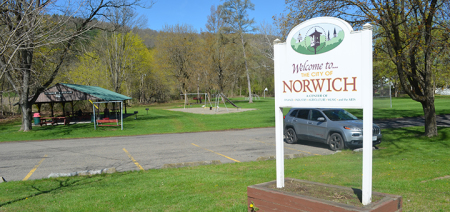Souvenirs Of Yesteryear: Street Signs
Published:
March 6th, 2007
By:
Donald A. Windsor

Municipal infrastructures, such as street signs, are usually taken for granted. Most residents know where they are going and how to get there, so they just drive to their destinations without reading the street signs. The drivers who do read them are from some place else. Street signs are the first things visitors pay attention to when entering a city. Missing or defective signs do not reflect well on a municipality. Here in the City of Norwich, drivers are frequently stopping to ask me where some place is, usually because of the occasional absence of some signs or the peculiar policy of having only one street labeled at many intersections.
Some signs look old and others look new, so I was under the impression that the replacement of street signs simply followed economic cycles of boom and bust and the capricious interests of the Common Council. But Police Chief Joe Angelino explained that street signs are mandated to comply with specifications in the State of New York Manual of Uniform Traffic Control Devices, which change over time. This means that street signs can be classified by their appearance and the dates of their erection can be determined. That is, street signs reveal their history. To us infrastructure fans, this is a startling breakthrough.
Continue Reading This Story
Subscribe now at half price for a limited time!
Author: Donald A. Windsor - More From This Author
Comments








